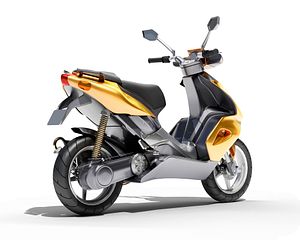In Singapore, it’s hard to find a taxi when you need it. Taxi fares are rising and waiting times are getting longer.
Residents have started looking for cheaper alternatives to get from one place to another. The newest one is Lompang – a social media app that connects passengers to riders. Each ride costs just five Singapore dollars ($4).
Three out of six taxis in Singapore are not available during peak hours, according to the Land Transport Authority. As if the long wait wasn’t enough, fares are also on the rise.
Last week, SMRT, a company that operates underground trains, buses and taxis in Singapore, raised fares for some taxis by 30 percent.
The basic fare for taxis starts from S$3 ($2.40), but surcharges are added. There are additional charges for peak hours, driving into the city and taking a ride after midnight.
Residents are becoming frustrated by the daily commute to and from work.
“The MRT is extremely crowded during office hours,” says Asim Saeed, who works for a foreign bank in Singapore. “Buses are too infrequent and booking a taxi always fails.”
As of this year, there are 27,516 taxis on the island state, catering to 5.4 million people. Other forms of transportation include underground trains and buses.
So why do taxis still fail to meet demand?
Statistics show that it’s not a numbers issue. The problem lies in managing taxis.
Taxis are doing fewer trips and changing shifts at the same time. Drivers are also choosy and refuse passengers going to certain locations.
Lompang, which became available on December 21st, helps people get to work on a scooter. People identify where they want to be picked up from and their destination using their handset’s Global Positioning System (GPS). Then they check for and choose riders they want to hitch a ride with. Passengers get to rate their riding experience at the end of the journey.
Initially the app will only work for commuters in the Central Business District of Singapore, which is the most crowded area during peak hours. This will encourage people working for banks and financial institutions to hitch a ride during rush hours.
All rides, regardless of distance or traffic, have a fixed S$5 ($4) cost. For every ride, the driver gets S$4 ($3.20) and the rest is deducted as a service fee. The transactions are cashless and work on a credit system.
Lompang – derived from the Malay word tumpang, which means to piggyback – is the brainchild of Erfi Azhar, a student at the National University of Singapore, and his friend Aaron Fu, who works for a foreign bank.
The two men, who are in their twenties, told the Straits Times that their app is not for commercial purposes. The charge is to cover insurance and petrol costs.
Although Lompang is the first of its kind in Singapore, ride sharing apps have been making waves in the U.S. for a while. What sets Lompang apart from its U.S. counterparts is that it uses scooter sharing rather than car-pooling.
A popular one called Uber that lets you car pool is putting taxis out of business. In Los Angeles, 200 taxi drivers protested against the apps in June this year, labeling them as illegal.
Founders of Lompang held networking events before the launch to introduce drivers to passengers. They have also used social media to market their app and spread awareness.
However, not everyone is excited about ride sharing. Some people are uncomfortable about sharing a ride with a stranger. Others think that scooter rides won’t work in a tropical country.
“I would prefer to car pool,” says Pia Anthony, who works as an Accounts Manager at Hewlett Packard in Singapore. “It’s either too hot or is raining, so a scooter ride doesn’t seem like a practical option.”

































